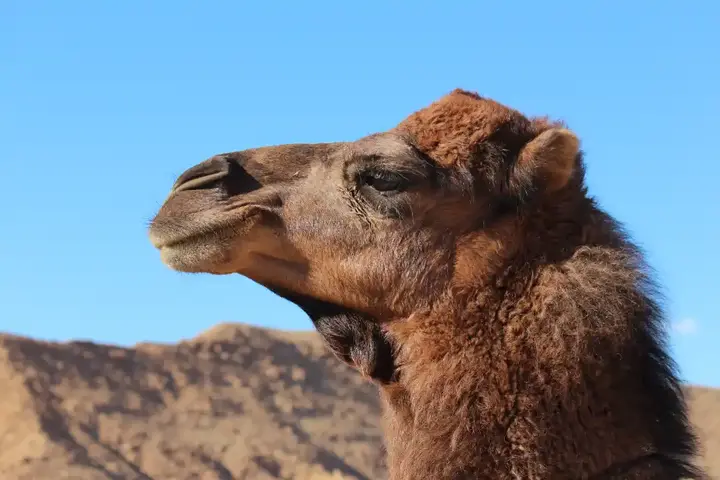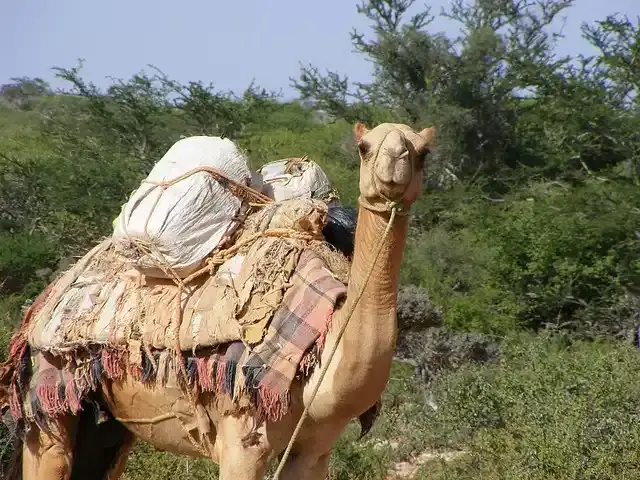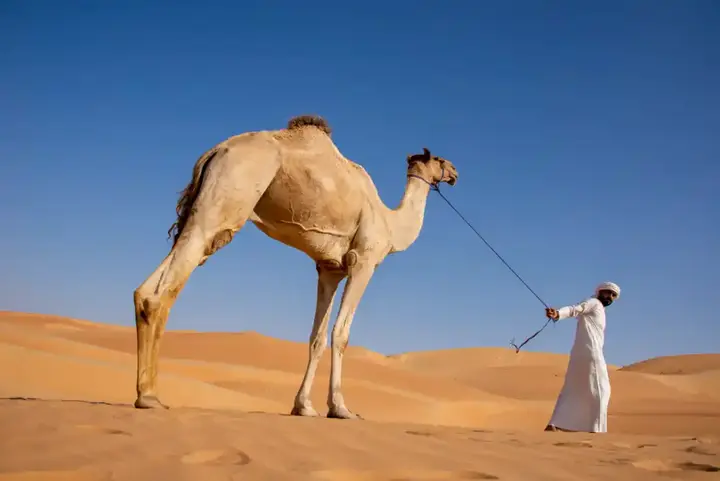Things you didn't know about the Arabic camel

Every year, the Ministry of Culture in Saudi Arabia celebrates distinctive factors of cultural significance to the Kingdom in order to highlight the country's cultural differences. In this light, 2024 was declared the Year of the Camel. The Minister of Culture, Badr bin Abdullah bin Farhan Al Saud, stated, "In 2024, we celebrate camels as a high-value cultural symbol, a fundamental pillar of our authentic national identity, and a source of pride at every stage and field. Designating 2024 as the Year of the Camel comes as part of the national efforts to promote camels and related industries from a development and economic perspective." Camels have been part of Arab culture and history for decades, serving as the main source of transportation for the inhabitants of the Arabian Peninsula, making them of great importance to the peoples of the region. In addition, it is also a religious symbol for Muslims, and is mentioned in the Holy Quran for its unique characteristics and features. To celebrate their incredible contribution to the region and their continued importance, Vogue Arabia chose to celebrate the occasion through the cover of its Saudi issue as well.
Recommend
Show key points
- Saudi Arabia has designated 2024 as the Year of the Camel to honor the animal's cultural, historical, and economic importance to the Kingdom.
- Arabian camels, also called dromedaries, are uniquely adapted to desert life with features like a single hump for fat storage, three eyelids, and two sets of eyelashes.
- Historically significant, camels have been domesticated since the fourth millennium BC and were essential for transportation and trade across the Arabian Peninsula.
- ADVERTISEMENT
- The Arabic language reflects the camel's prominence in the culture, with over 100 different terms used to describe various types and traits of camels.
- Camel racing is a beloved traditional sport in Saudi Arabia, with specially bred camels participating in events that continue to captivate the population.
- Camels play a vital role in local cuisine and daily life, with their meat, milk, and skin offering nutritional and economic value to communities.
- As a powerful national symbol, the camel continues to inspire Saudi poetry, language, and proverbs, embodying resilience, beauty, and identity.
Distinctive features of the Arabic camel

1. The Arabic camel has one hump
Arabian camels, also referred to as the Arabian camel, are known for their lonely hump. Although its hump is less than the two-humped camel, the Arabian camel can weigh up to 725kg and can store up to 36kg of fat. These stored fats can then be broken down into energy and water when food is not available. A healthy Arabian camel can spend weeks without eating or drinking, and live on nutrients stored in its single hump.
2. The "Ship of the Desert" rarely sweats
Often referred to as the "ship of the desert," Arabian camels can travel up to 100 miles in the desert without sweating too much. They are better equipped to withstand extreme heat than we do – the fat stored in their hump allows for better temperature regulation and the ability to constantly regulate body temperature, rising during the day to combat heat and vice versa in the evening.
3. Arabian camels have three eyelids and two sets of eyelashes
To cope with the harsh conditions of the desert and its regular sandstorms, Arabian camels have not one or two sets of eyelids, but three sets of eyelids, as well as two sets of eyelashes to protect their eyes. In addition, it can also completely block its noses during sandstorms without any lasting effects.
4. Arabian camels have been domesticated since the fourth millennium BC
Camels have been an integral part of Arab culture and Islamic history for years. It served as a major means of transportation, accompanying many key figures and prophets during their time, thanks to its ability to carry nearly 400 kg and travel 25 miles a day. Although they are no longer required for transportation by the masses, they still help Bedouin communities travel, usually roaming in groups.
5. There are more than 100 words in Arabic for "camel"
The importance of the animal in Arab history is illustrated by the many terms used to refer to sentences. There are more than 100 words in Arabic for animals, differing in dialects and varying based on gender, appearance, characteristics, temperament and function, along with drinking behaviors, breed and height among many other factors.
6. Many camels are bred specifically for racing
Camel racing is widely praised in the Kingdom and is deeply rooted in the culture and history of the region – and the sport remains strong to this day. To continue the legacy of the sport, some camels are bred for racing and can travel at speeds of up to 40 miles per hour.
The symbolism of the Arabic camel

The Arabic camel is an iconic symbol representing the culture of the Kingdom of Saudi Arabia, and has been associated with the life of the inhabitants of the Arabian Peninsula since ancient times, as it served as the main means of transportation for transporting goods and traveling long distances, and this is reflected in the language of its people, where the camel is mentioned in Arabic proverbs, such as the saying "I have neither a camel nor a camel", which is used to politely disavow involvement in an unrelated matter. The camel is also one of the famous symbols mentioned by Arab poets at length. For example, the poet Tarfa ibn al-Abd al-Awja describes the lame camel in his verses:
However, I have a way to escape from sadness, when it pursues me,
On a high, emaciated animal that steps quickly day and night,
A confident camel, solid and slim as casket boards,
Guide him by sure on trampled ways, knocks dug into the ground as the fabric is in the cloth.
The benefits of Arabian camels

Camels are used for their skin, meat and milk, as camel milk is known for its unique composition, as it contains fats, proteins, lactose sugar and minerals in distinct proportions compared to other types of milk, such as cow's milk. In Saudi Arabia, a popular dish made from camel veal meat is Kabsa al-Hashi. Camels are a symbol of beauty for the inhabitants of the Arabian Peninsula in general, and in Saudi Arabia in particular. Special camel festivals are held annually in the Kingdom, the most famous of which is the King Abdulaziz Camel Festival. Among the most important aesthetic characteristics that camels are valued for are the length of the front leg, the length of the back, the size of the head, ears, the hump, the length of the mustache, the length of the neck, the withers, the opening of the throat, the width of the chest, the width of the side, and the size of the bone.








